
Become a member
Join today and help protect nature, beauty and history – for everyone, for ever. Enjoy access to more than 500 places with National Trust membership.
A family home and a great estate. Glorious landscape garden surrounded by parkland with fine 18th-century house.
Broadclyst, Exeter, Devon, EX5 3LE
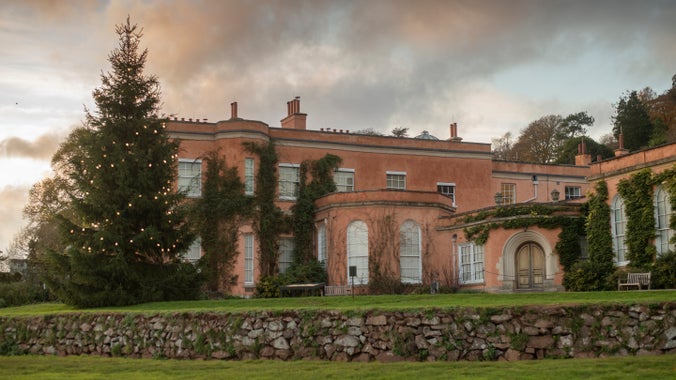
| Asset | Opening time |
|---|---|
| House (last entry 30mins before closing) | 11:00 - 16:00 |
| Wider parkland | Dawn - Dusk |
| Garden | 10:00 - 16:30 |
| Stables Coffee Shop | 10:00 - 16:30 |
| Killerton Kitchen Café | 11:00 - 16:00 |
| Shop | 10:00 - 16:30 |
| Chapel | 11:00 - 16:00 |
| Second-hand bookshop | 10:00 - 16:30 |
| Ticket type | With Gift Aid | Without Gift Aid |
|---|---|---|
| Adult (18+) | £18.70 | £17.00 |
| Child (5-17) under 5s free | £9.40 | £8.50 |
| Family (2 Adults and up to 3 children) | £46.80 | £42.50 |
| 1 adult, 3 children | £28.10 | £25.50 |
The Second-hand Bookshop is open, and all money raised helps to care for Killerton. We gladly accept small donations of good quality books at the bookshop.
Killerton Kitchen Café is located in the house, facing the garden and serves hot and cold food and drinks, sandwiches and light snacks. Assistance dogs only.
There are parking spaces on site. The surfaces of the main car parking are tarmac and/or gravel. The surface of the overflow car park is gravel and grass.
The Stables Coffee Shop is available to all visitors and and serves hot and cold food and drinks, sandwiches and light snacks. The Stables Coffee Shop also welcomes dogs and muddy boots.
Cycle parking (‘Sheffield’/inverted-U stand style) is available in the visitor car park by the entrance to the Stables. Cyclists are welcome. We’re happy to refill drinks bottles at the café or from dedicated fountains in the toilet blocks. A range of offroad cycle trails are available starting from the property and around the estate.
Dogs are allowed on short leads everywhere outside. Assistance dogs only in historic buildings, including the interior and terrace of the Killerton Kitchen Café. Dogs are welcome in the Stables Coffee Shop. Please keep dogs under close control around livestock.
There are six EV charging points located in the first section of the visitor car park. They are type 2 sockets. They can be accessed using mobile app, RFID card, or contactless payment device. Visit our EV charging partner, RAW Charging's website (www.rawcharging.com/drivers) to download the app before your visit.
Inside the shop you'll find plenty of inspirational gifts and homeware items. All our delicious food range is made especially for us here in the UK by small artisanal producers using the finest, carefully sourced ingredients.
Toilets are open in the visitor car park, by the house and in the garden.
Some steep routes in parts of the garden. Stepped entrance to the house, alternative accessible entrance through side door. Blue Badge parking. Accessible toilets in car park, house and garden. Tramper for hire. Bookable relaxed sessions are available, see our events page for details.
A map is available from Visitor Reception showing the garden paths, slopes and inclines. Path surfaces are tarmac or fine gravel. Paths are accessible with motorised mobility aids or children’s pushchairs. As a hillside site, manual or self-propelled wheelchair users may find the hills and slopes challenging.
Adapted toilets are in the car park (limited space), by the house and in the garden. Baby changing facilities are in the car park, by the house and in the garden.
There are 10 designated spaces for disabled visitors where the parking area surface is tarmac and 10 additional spaces on a gravel surface, all approximately 75 metres from visitor reception. Visitors parking in accessibility spaces do not need to obtain a parking ticket.
An induction loop system is in place by the tills in Visitor Reception, Killerton Kitchen Café, The Stables Coffee Shop and the shop.
Any of our guides can be printed in alternative formats. Please contact us 01392 881345 or email killerton@nationaltrust.org.uk for assistance.
Killerton Kitchen Café has seating on two levels. The first area has level access from the garden.
There is a hardstanding, level path leading from the Stable block exit to the house. The level path leading to the garden and terrace then changes to a gravel surface.
The Tramper, an all terrain motorised scooter, is available to hire either for a morning (10am-12.30pm) or afternoon session (1pm-3.30pm). Please telephone us in advance for more information on routes and to make a booking by calling 01392 881345 or email killerton@nationaltrust.org.uk
There are a number of benches with and without arms around the main garden route and chapel grounds. Sit-able chairs are positioned in most rooms in the house. Most do not have armrests. Please ask a volunteer to point out the chairs that can be used.
Visitor Reception is accessed through the original, uneven, cobbled stable yard. This may cause difficulty for some visitors, please ring the bell located under the entrance archway for assistance.
A bell to ring to request for a buggy driver for transport to the house is to be found on the side of the grey kiosk in the car park. The buggies operate between 11am and 3.30pm and are run by volunteers. The buggies aren't able to accommodate wheelchairs. The buggy service can be used to avoid the cobbled visitor reception area.
Manual wheelchair loans are available from visitor reception (two available on a first come, first served basis) during normal opening hours.
Immerse yourself in festive cheer and community spirit. Enjoy the stunning 'Red Dress Project', hand-crafted decorations, twinkling lights, seasonal music, games, trees dressed by local groups, hearty food and winter walks.

Join us for a very red Christmas. Killerton is hosting The Red Dress Project this year.
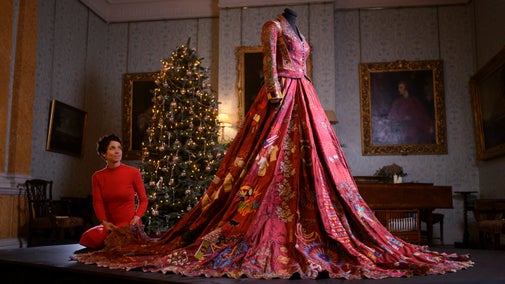
Killerton is equipped with resources to help make your visit a memorable one. Read on to discover how you can best access this special place.
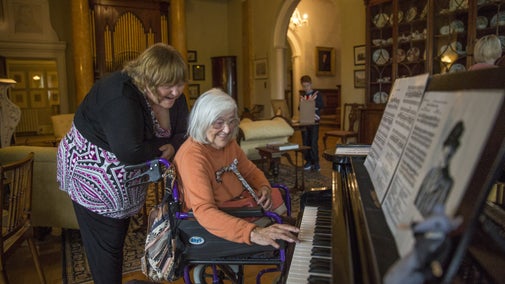
Killerton is a two pawprint rated place. With miles of paths and tracks to explore, dogs love walkies at Killerton. Find out the best dog-friendly walking routes and where they can run off the lead.
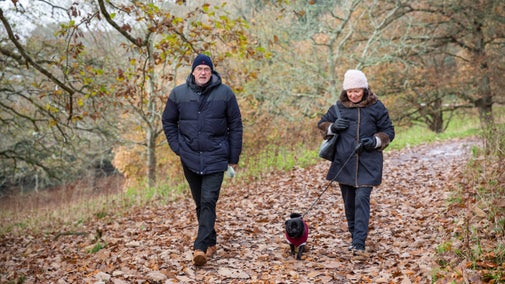
Explore the garden, woods and parkland at Killerton. With an estate that covers 6,400 acres, you'll find fun and adventures for children of all ages.

A friendly Georgian house, once home to generations of the Acland family. Explore the ground floor of the bustling family home as it looked in the 1920s/30s, dressed for Christmas.
The fashion exhibition and first-floor of the house are now closed whilst we get ready for our new installation, ready February 2026.
A Grade I listed chapel, built in 1841. Phase 1 of the Chapel restoration project is now complete, with the exterior and beautiful stained glass rose window restored to its former glory - as seen in BBC's Hidden Treasures of the National Trust.
A garden of historic significance, famous for its collection of shrubs and specimen trees. Discover the Lady Cott (Bear's hut) and ornamental dairy; curious thatched buildings nestled between the trees.
Historic parkland with extensive woodland and an ancient Iron Age fort.
One for younger children, with a slide, behind the Stables courtyard. Another with swings, in a leafy hideaway by the car park.
Stables Coffee Shop (dog friendly) serves drinks, cakes, light lunches and snacks. The Killerton Kitchen Cafe opens with the house daily 11am to 4pm, offering a slightly wider menu overlooking the formal gardens.
Shop in the original stables selling gifts, homeware and plants. Second-hand Bookshop.
Discover what's coming up at Killerton this winter. From embroidery workshops, relaxed hours to see the house to tree planting, see the events happening at Killerton over the next few months.
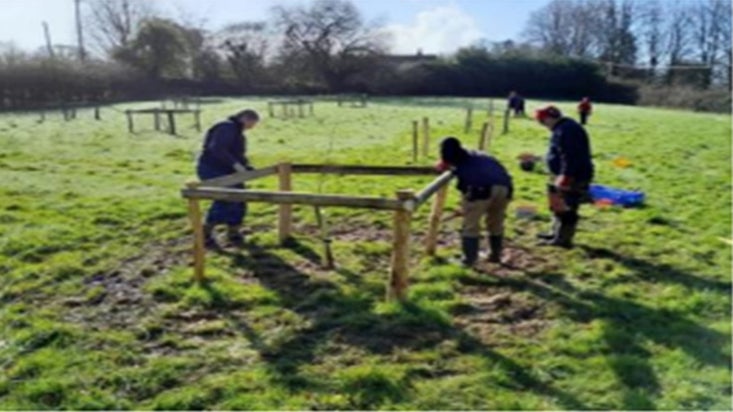
Discover what to see and do in Killerton's diverse garden. There’s plenty of space for walks and adventure at this country estate near Exeter.

Explore the forests, orchards and parkland on the vast estate at Killerton and discover the creatures that live here, from Highland cows and dormice to bats and butterflies.

Explore the garden, woods and parkland at Killerton. With an estate that covers 6,400 acres, you'll find fun and adventures for children of all ages.

Stop by the Stables Coffee Shop for some refreshments, before browsing for gifts and souvenirs in the National Trust shop or second-hand bookshop.

Follow the journey of conservation at the places in our care in a new series, Hidden Treasures of the National Trust, broadcast on the BBC. Killerton features in episode 4, where our experts and conservators tell the stories of collections and unusual collectors through the Diana dress and the chapel rose window. You can now watch the episode on BBC iPlayer.

Find out about walking, cycling, orienteering and horse riding at Killerton.

Horse riders can explore Killerton, Devon thanks to the miles of permissive bridleways that take in Danes Wood, Killerton Park and Ashclyst Forest.

An enchanting walk from the Killerton estate to nearby Danes Wood, a haven for wildlife.

During your visit to Killerton, enjoy a circular walk across Front Park and up Dolbury Hill, known locally as The Clump.

This circular walk highlights some of the many ancient trees that you can see in the garden and park at Killerton, including sweet chestnuts that were planted some 250 years ago.

This dog-friendly walk takes you through one of Killerton's hidden secrets, an enclosed, far-reaching expanse of grassland.

A 2.5-mile circular walk with wide open space where dogs can be on and off the lead while you enjoy far-reaching views and rolling Devon countryside.
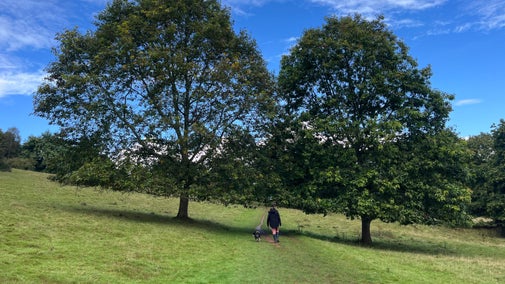
This buggy-friendly circular walk follows surfaced paths through the parkland, garden and chapel grounds and is a great introduction to Killerton.

Enjoy a delightful circular walk from Killerton through orchards, woodland and picturesque thatched cottages at Sprydon.

This dog-friendly walk follows a 19th-century carriage drive though traditional parkland before finishing with a close up view of the old quarry and extinct volcano.

Take in the full array of autumnal colours on this gentle meander around the main paths of the garden at Killerton.

Stop by the Stables Coffee Shop for some refreshments, before browsing for gifts and souvenirs in the National Trust shop or second-hand bookshop.


A thatch cottage with original features and a large garden, on the edge of the great Killerton estate with its 18th-century house, garden and parkland walks.

A pretty little 1930's inspired cottage on a hill at the heart of the Killerton Estate in Devon with beautiful views towards Ashclyst Forest.

A traditional thatch cottage stay on the border of the Killerton estate.

On the wonderful Killerton Estate in Devon, this pretty 1930’s inspired cottage nestles in acres of countryside, looking towards Ashclyst Forest, perfect for escaping the city.

A charming thatched cottage complete with open-beam ceilings and an inglenook fireplace.

Stay in the parklands of Killerton in this contemporary restored lodge house.

A fairy-tale thatch cottage in a magical forest setting.
Immerse yourself in festive cheer and community spirit. Enjoy the stunning 'Red Dress Project', hand-crafted decorations, twinkling lights, seasonal music, games, trees dressed by local groups, hearty food and winter walks.
The internationally acclaimed Red Dress project, conceived by British artist Kirstie Macleod, provides an artistic platform for individuals, particularly women, and global communities to tell their stories through embroidery.
Would you enjoy a quieter visit to Killerton this Christmas? Visit during one of our relaxed sessions, designed to be of benefit to visitors who prefer a quieter and calmer experience, such as those with autism, SEN or dementia.
Join us on Saturday 10 January on a one-off volunteering day and help us plant trees
Pull on your boots, grab a coat and get exploring on one of our way-marked welly walks.
Join us on Saturday 17 January and Wednesday 18 February on a one-off volunteering day and help us plant trees
As part of our Wellbeing Walks, join this free circular walk taking in the Clump and woodlands to reach Columbjohn chapel
As part of our Wellbeing Walks, join this free walk through parkland to Deodar Glen.
Would you give away your family home for your political beliefs? Sir Richard Acland did just that with his Killerton Estate in the heart of Devon, when he passed it on to the Trust in 1944. Today, you'll find a friendly Georgian house set in 2,600 hectares (6,400 acres) of working farmland, woods, parkland, cottages and orchards.
Killerton house is home to the National Trust's biggest fashion collection, with more than 20,000 items of historic clothing and accessories. The core collection was begun by Paulise de Bush before it was first shown at Killerton in 1978. Head to the first floor of the house to immerse yourself in the annually changing fashion exhibition.
There's plenty of calm space in the glorious garden, beautiful year-round with rhododendrons, magnolias, champion trees and formal lawns. You can explore winding paths, climb an extinct volcano, discover an Iron Age hill fort and take in distant views towards Dartmoor.
The Aclands lived at Killerton for almost 300 years and in that time they renovated the house into a Georgian mansion and transformed the garden and estate with exotic plants.

The Acland family, who passed on the estate to the Trust in 1944, did so for the benefit and enjoyment of everybody. Here's a brief history of the family who called Killerton home.

Discover some of the highlights in the collection at Killerton, from an historic landscape painting to a pair of special wine goblets.

Killerton is home to the National Trust’s biggest fashion collection, with more than 20,000 items of historic clothing and accessories, some dating back to the 17th century.

Conservation work is a vital part of what the National Trust does at Killerton in Devon. Discover more about our latest initiatives.
Learn more about Killerton's ‘Three Rivers’ Landscape Recovery Project, where we're aiming to restore nature and the natural landscape, with a focus on improving habitats for the future.
The chapel at Killerton is undergoing extensive conservation work. Follow this exciting project and find out ways that you can support. Help us to ensure that the chapel can be enjoyed by everyone, for ever.
Killerton’s estate is an important wildlife haven, but is threatened by climate change. Thanks to the Green Recovery Challenge Fund, projects have been completed to protect its grounds.
By 2030 the National Trust will be carbon net zero, which is when we achieve a balance between the carbon released into the atmosphere and the carbon removed from it.
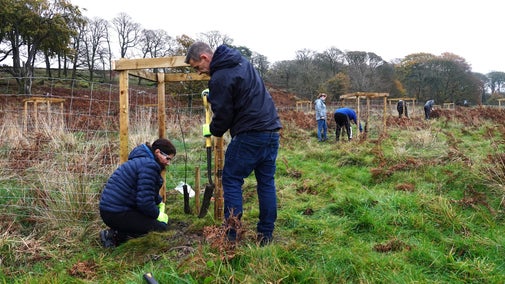
Killerton relies on more than 400 volunteers to carry out conservation work across its house and estate and is looking for more people to join its friendly and dedicated team.
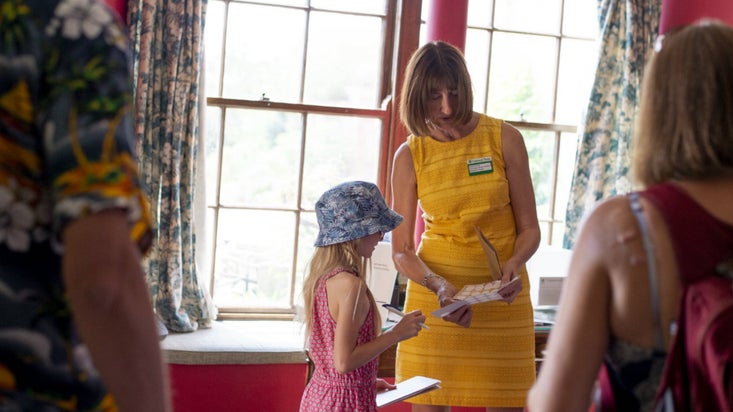
Your gift will help to conserve and protect the house, garden and estate at Killerton for future generations to enjoy.
£25 could plant one established orchard tree.

Join today and help protect nature, beauty and history – for everyone, for ever. Enjoy access to more than 500 places with National Trust membership.
By sharing your email address you’re agreeing to receive marketing emails from the National Trust and confirm you’re 18 years old or over. Please see our for more information on how we look after your personal data.